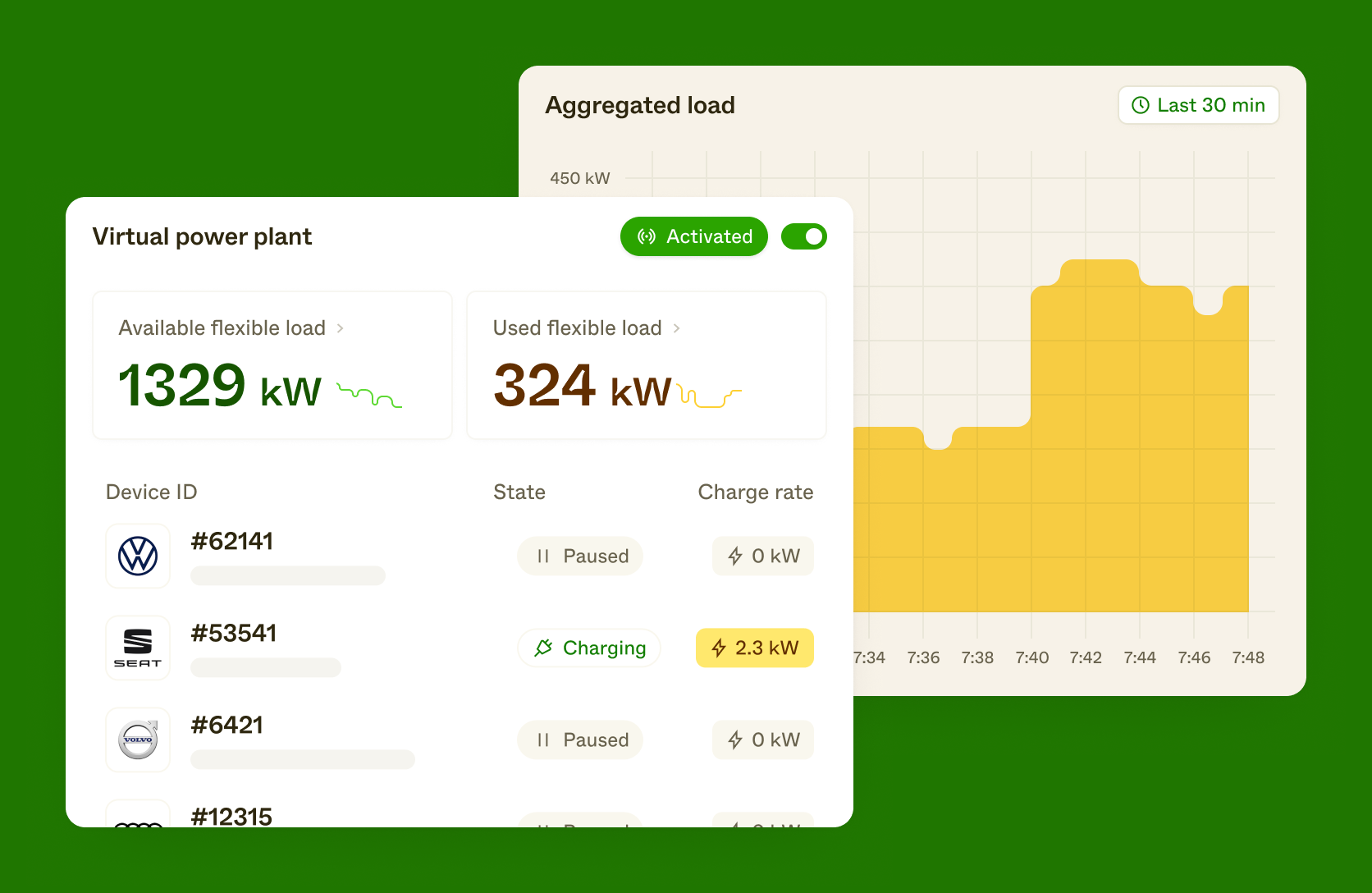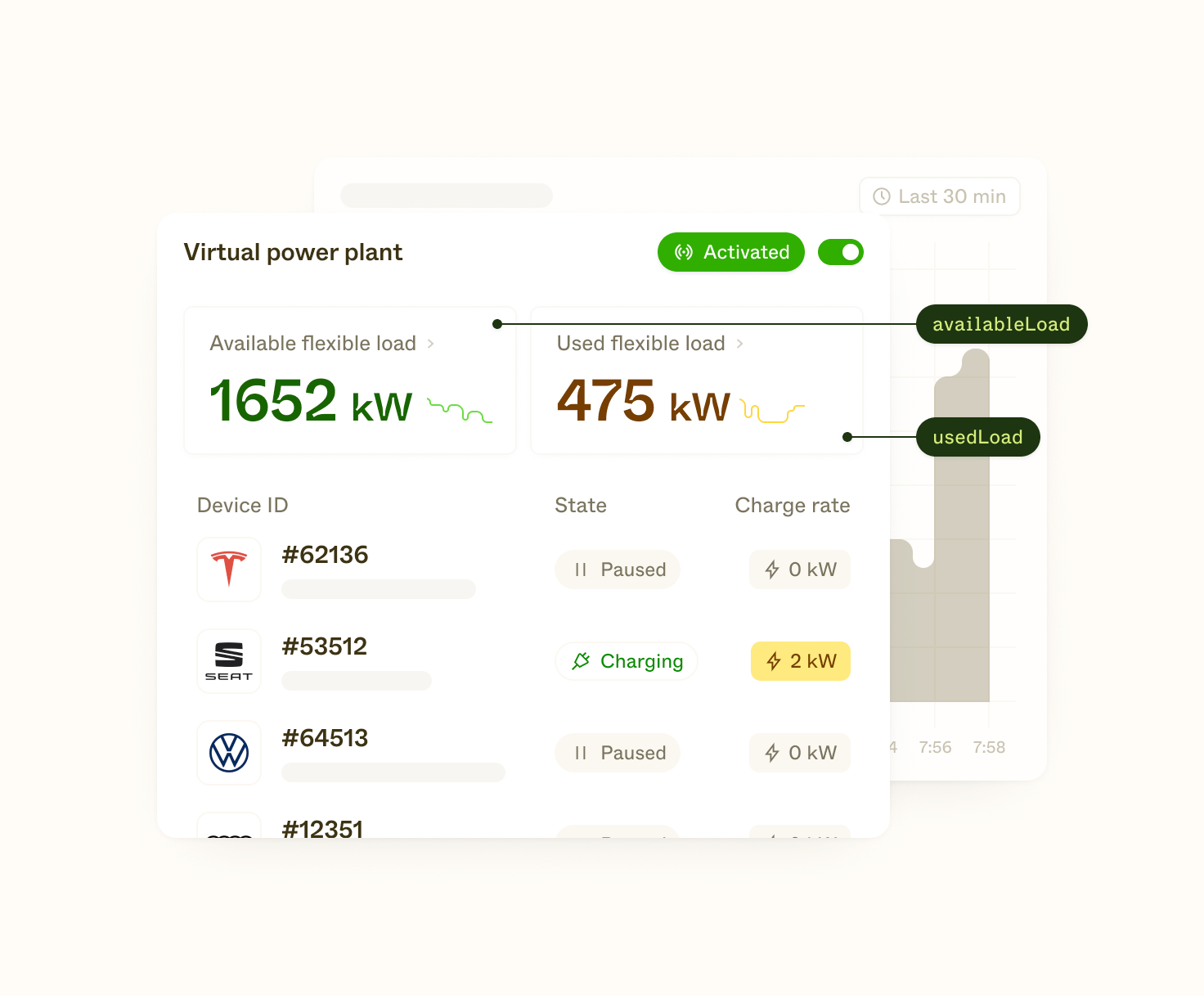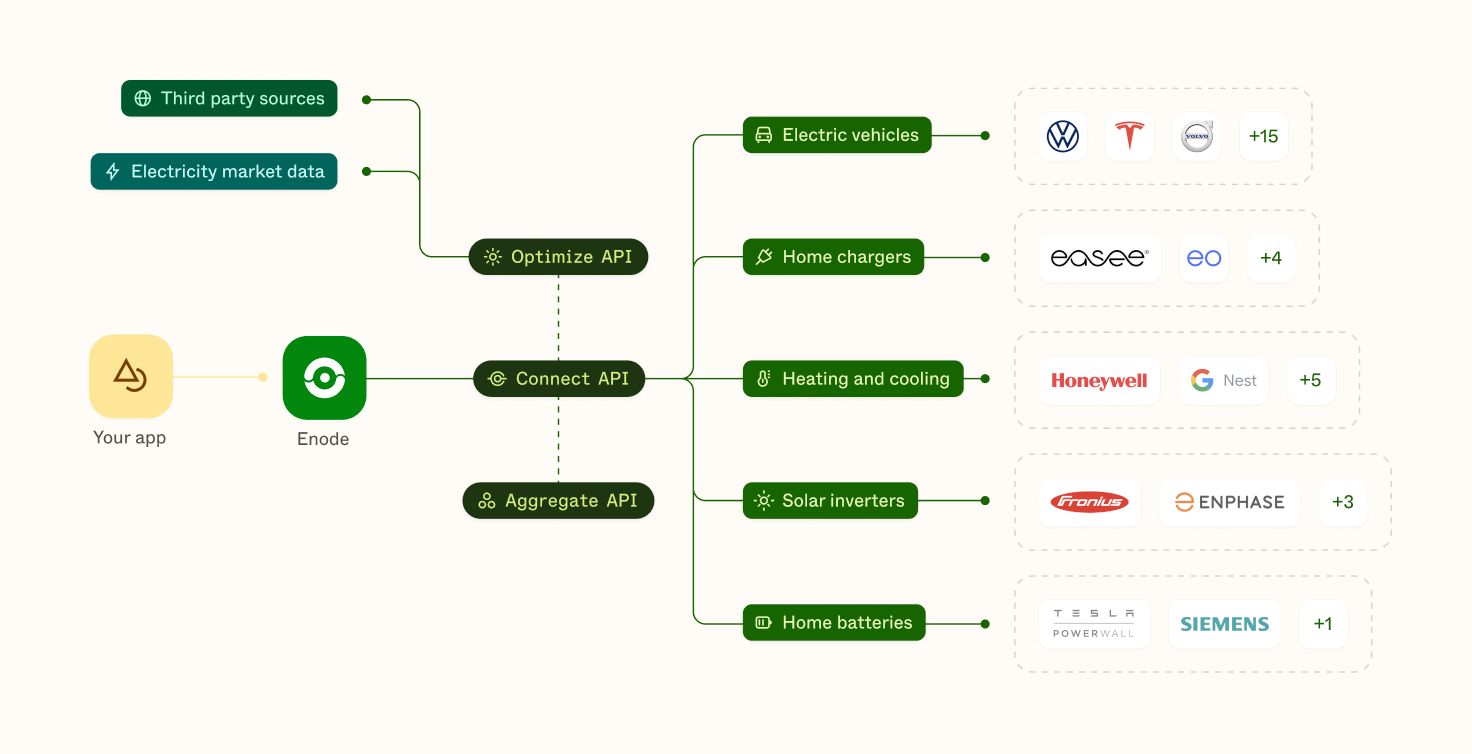A complete guide to Virtual Power Plants and their role in a sustainable future

Before diving into the technical details of virtual power plants (VPPs), let's take one step back and see how VPPs fit into our zero-carbon energy future.
This future, as I am sure you already know, fully depends on renewable energy supply and electrification of most sectors. The electrification leads to a large increase in the demand for electricity as electric vehicles make their way into every garage and heat pumps are installed in every home. Renewable energy supply from wind and solar on the other hand is highly intermittent, making it more difficult to deliver consistently on the huge energy peaks created by electrification.
The good news is that all the new Distributed Energy Resources (DERs) that we surrounds ourselves with, from EVs to thermostats and solar, can all be part of the solution. How? Via demand response. DR can balance energy supply and demand, making it possible to transition to a zero-carbon energy system without building out the grid for the highest peaks. It will also increase the mix of renewable energy, making it a clear win-win!
To be part of the demand response market you need to control a large energy load. This can be done either by owning a very large energy asset, like an industrial facility, or by doing something even more interesting - building and maintaining a Virtual Power Plant (VPP).
In this guide, we will give you a full deepdive on these virtual power plants. How they work, how to build one and their role in a zero-carbon energy system.
More specifically we will cover:
- What is a Virtual Power Plant (VPP)?
- How Virtual Power Plants can help save the planet
- What do VPPs have to do with DERs?
- What do VPPs have to do with demand response?
- Leading players in the Virtual Power Plant space
- How can my company build a Virtual Power Plant and participate in the demand response market?
What is a Virtual Power Plant (VPP)?
A Virtual Power Plant (VPP) is a group of decentralized energy assets which can be controlled remotely as a one entity. A VPP can for example consist of 1000 electric vehicles, all connected together to operate as one large battery to balance the grid. The most important use case for VPPs is demand response.
Virtual Power Plants, or VPPs, are a relatively new idea. But they build on the foundation of demand response, which has been around for decades. VPPs will play an ever-increasing role in the energy transition. So, it is important to understand first, what a VPP is, and then how VPPs differ from demand response. At their core, VPPs are a group, or aggregation, of decentralized assets which can be controlled remotely as a group, but continue to operate independently. Let’s take that step by step.
A VPP is comprised of a multitude of energy resources. They can be a single type of asset, such as EVs, or be comprised of a heterogeneous mix of assets, such as batteries, EVs, and CHP facilities. Next, all of the assets in the VPP are decentralized meaning they are connected to the grid but operate independently providing independent value to the grid, on their own, outside of the VPP. Finally, VPPs are dispatched from central control. The ability to aggregate flexible capacity and help balance the grid is a key aspect of VPPs, something we will get into now.
How Virtual Power Plants can help save the planet
VPPs are able to help save the planet through their ability to dispatch DERs to provide grid flexibility and relief. VPPs are designed to signal DERs when the grid is in need of some relief. That relief can be in the form of curtailing load and asking DERs to use less energy. For example, asking EVs to stop charging. The relief can also be in the form of additional energy, such as a battery or EV dispatching into the grid when the energy supply is low. This flexibility helps the grid balance supply and demand, which ensures dirty peaking power plants, which are powered by fossil fuels, do not need to run as frequently.
More renewable energy
VPPs help increase the development, adoption, and use of renewable energy resources such as wind and solar because of their unique ability to balance the grid. VPPs are able to dispatch DERs to provide grid relief, which helps the grid stay balanced even when intermittent energy supply from wind and solar increases.
More stable grid
VPPs help ensure a more stable grid because of their ability to dispatch in real-time DER assets. These DER assets can add energy supply to the grid, when supply is scarce, in the form of batteries and EVs. VPPs can also ask DERs to curtail, or slow their use of energy, when the grid is stressed. This ability of VPPs to help balance the demand and supply of energy helps the grid become more stable.

What do VPPs have to do with DERs?
Virtual power plants play an important role in the energy transition. At their core, VPPs are a group of Distributed Energy Resources (DERs) that can be controlled as one large energy asset. So while one DER is typically a single EV, thermostat or solar inverter, a VPP consists of thousands of these units. Let's have a look at the most used DERs in VPPs.
Electric vehicles
EVs are an important component of VPPs. The flexibility of EVs allows them to absorb excess generation from renewable energy resources, as well as act as real-time demand response assets. EVs are effectively a movable grid resource. VPPs signal EVs to charge only when there is excess supply on the grid or prices are inexpensive, allowing for EVs to act as a dynamic DER asset in time.
Thermostats
VPPs will also be able to utilize thermostats, which are increasingly thought of as DERs because of their ability to help the grid become more stable during periods of instability or peak usage. The VPP is capable of remotely, or automatically, changing set points to either pre-cool or pre-heat homes and facilities so energy users don’t have to use energy during periods of high prices. VPPs are also able to signal to thermostats in real-time and curtail the usage of HVAC systems to reduce the energy load and profile of customers during periods of grid instability.
EV Chargers
EV chargers will also act as an important resource in VPPs. VPPs are also able to signal EV chargers to stop the charging of connected EVs during peak periods or wait to charge connected EVs until energy is abundant and prices are low. Some VPPs are even able to signal EVs and EV chargers to inject additional energy into the grid when supply is low.
Solar and batteries
VPPs and batteries are a powerful combination. As discussed above, batteries are able to store excess energy, when there is an abundance of energy and prices are cheap and dispatch that same energy when energy is scarce and prices are high. Solar plus battery storage is a powerful combination of DERs, which will allow more resiliency and reliability on the grid.
What do VPPs have to do with demand response?
In short, VPPs can be used as demand response. In flexibility markets, many types of energy assets can be connected and traded, but the smallest DERs will not alone be able to participate. But when they are bundled together as a VPP, they can. Demand response is increasingly being made available for the residential market, where VPPs play an important role in letting single EVs and thermostats be part of the market. This will increase the rate at which we can move to sustainable future.
Leading players in the Virtual Power Plant space
VPPs are relatively new and there are not many large corporations focused on exclusively VPPs. Not yet at least! Many of the traditional demand response providers, including Voltus, Enel X, and others, are working to develop the software capability to build VPPs.
Evergreen Smart Power
Evergreen Smart Power is a British startup that is building a platform for DERs including heaters, batteries, and EVs to connect to the grid. The company’s VPP platform helps customer lower their energy bills and participate in DR by remotely controlling, lowering, and curtailing DERs based on market energy prices.
You can read more about their offerings here.
Logical Buildings
Logical Buildings is another US startup working to build VPP software focused on commercial real estate buildings. Their software platform is powered by AI and works to learn building habits to find inefficiencies as well as opportunities to save energy and money. The platform is designed to help building managers with Environmental, Social, and Governance (ESG) requirements.
You can read more about their offerings here.
Enode
Having worked on connections to DER for several years now, we at Enode have built a custom VPP solution for all our partners. Our Aggregate product creates a VPP from all your connected DERs, making it ready for value capture in the demand response market.
You can read more about our Virtual Power Plant Software here.

How can my company build a Virtual Power Plant and participate in the demand response market?
VPPs are a great way to participate in the demand response market! It is important to start with an understanding of the demand response programs available in your geography. Every city, state, and country has different energy policies, many of which support demand response programs.
Next is to determine which DER asset you think many customers in the area may already own. For example, many people in Norway own EVs; however, in the United States only a small percentage own EVs. Building a strong understanding of which DERs have market penetration will help you understand how to market to customers as well as what type of DER you will want to build a VPP for. The best way to incentivize customers to join your VPP is to explain the energy savings as well as the possible monetary savings.
How can my household be part of a Virtual Power Plant?
You may be able to join a VPP with a DER you already own! If you own an EV, smart thermostat, or battery you are already helping the grid, saving money, and saving energy. You can contact your local utility to learn whether there is a demand response program you could join. If you purchase your energy from an energy retailer you can contact them to learn if they have a VPP you could join.
Smart EV charging apps
Smart EV charging apps are acting like VPPs today! If you drive an EV, and have a charging app, you can check to see if there is smart charging. If so, be sure to enable smart charging. You will then be part of a VPP!
Utility programs
Many utilities are beginning to develop VPP software and aggregator DERs to participate in demand response. Reach out to your local utility to see if they have a demand response program and if they are building VPP software!
How can I learn more about Virtual Power Plants (VPPs)?
To learn more about Virtual Power Plant (VPP) we recommend talking to other experts in the industry. Many of the companies mentioned in this article will be able to add even more context as you go further down the rabbit hole.
If you want to learn more about VPP and the opportunities in the space, here are some additional resources:
- A full guide to Virtual Power Plant software
- A full guide to demand response software, a logical next step from VPPs
- This The Verge video on virtual power plants in cities.
